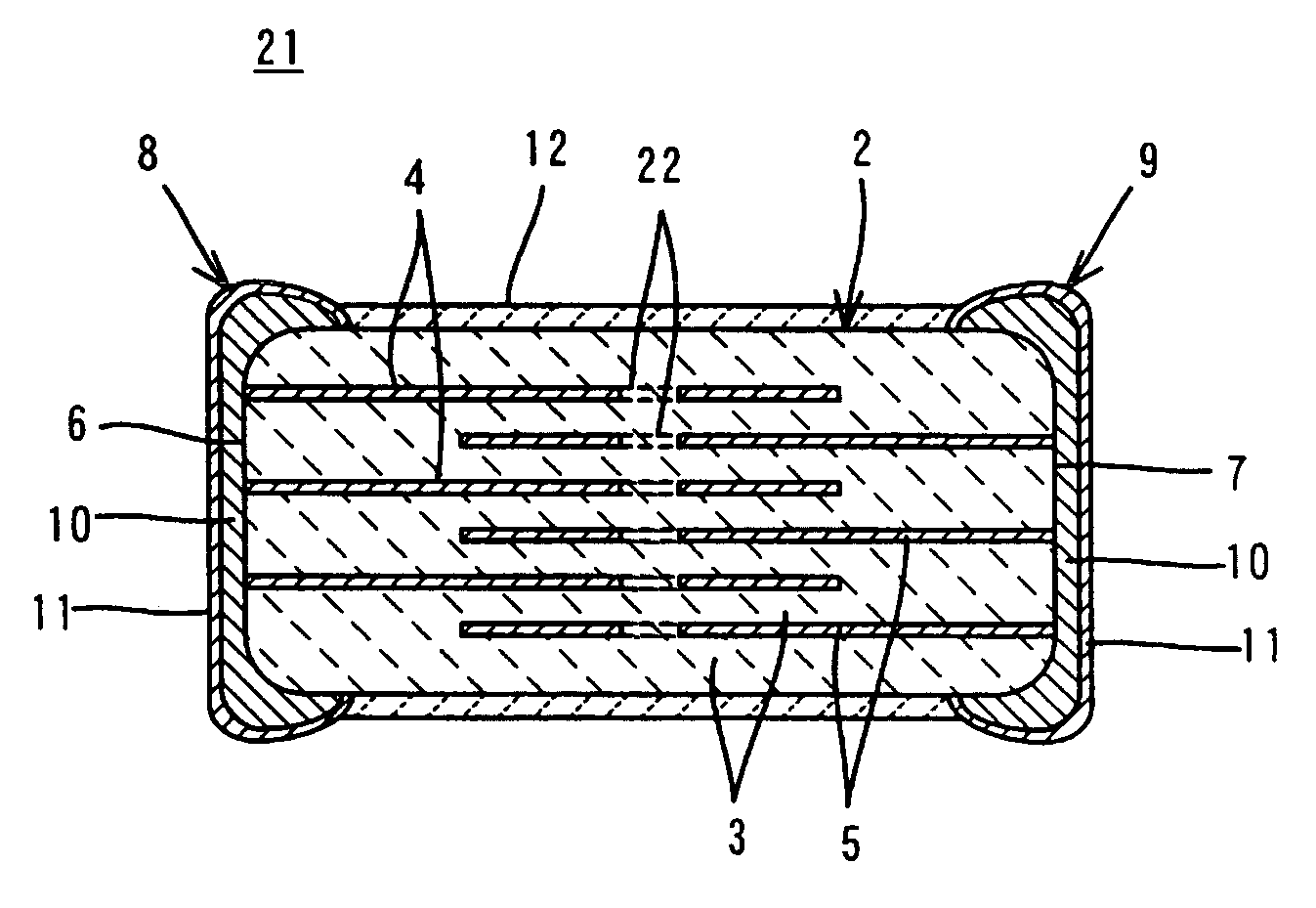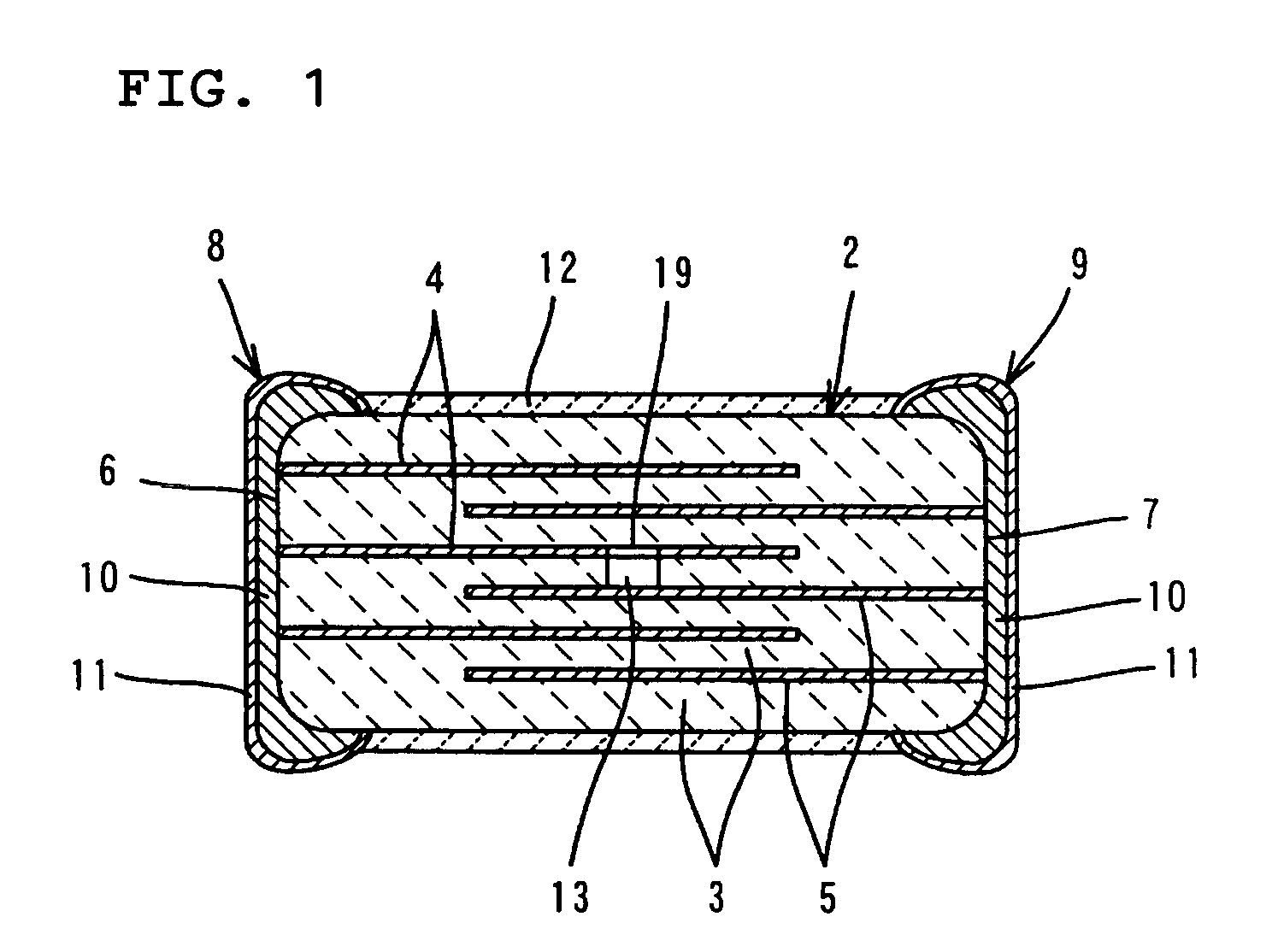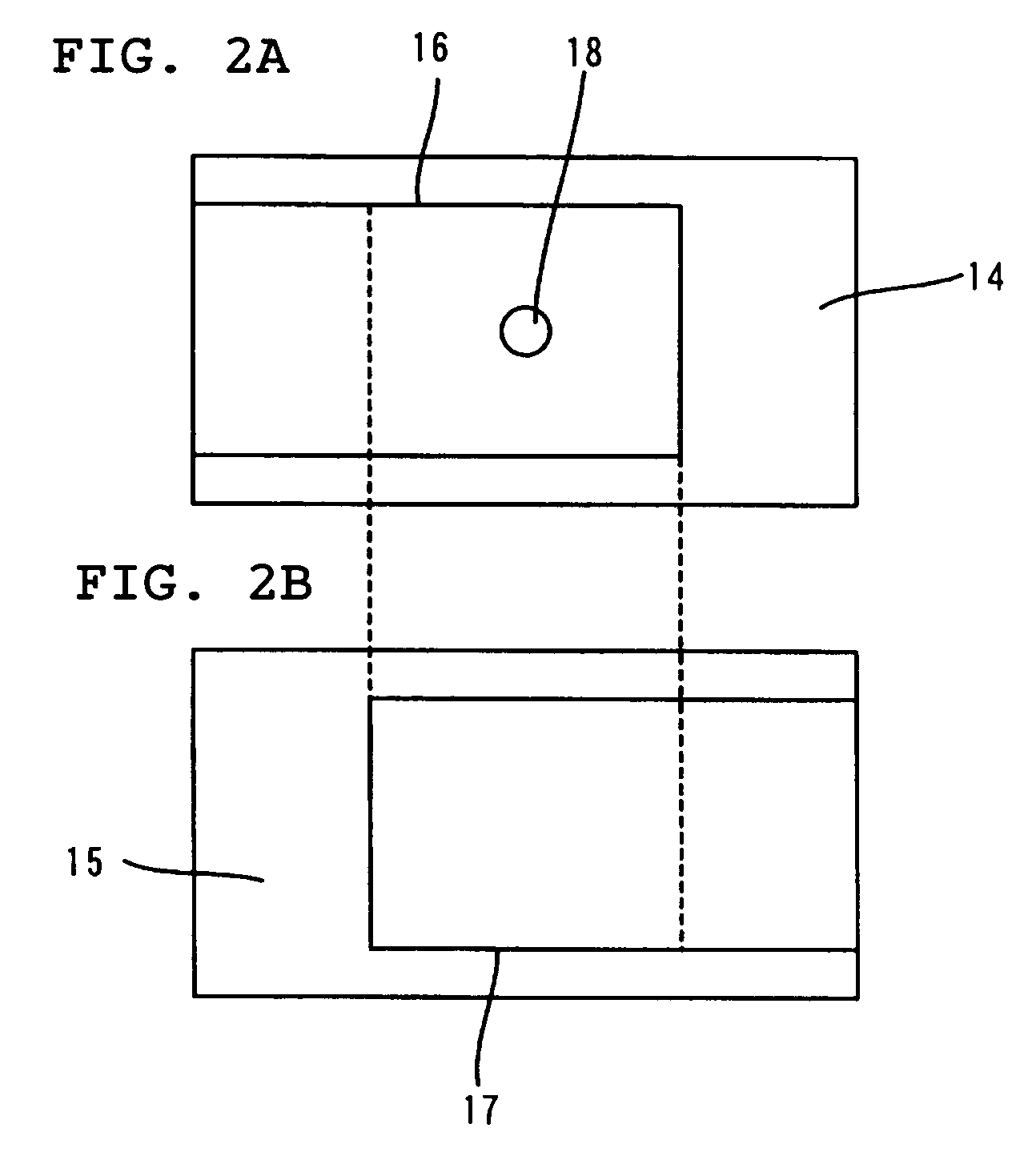Laminate-type positive temperature coefficient thermistor
a positive temperature coefficient and thermistor technology, applied in the direction of positive temperature coefficient thermistors, resistor details, adjustable resistors, etc., can solve problems such as breakage in the center of laminates, and achieve the effect of improving the resistance to voltage properties
- Summary
- Abstract
- Description
- Claims
- Application Information
AI Technical Summary
Benefits of technology
Problems solved by technology
Method used
Image
Examples
example 1
[0076]In Example 1, an example of the first preferred embodiment described with reference to the FIGS. 1, 2A, and 2B is evaluated.
[0077]First, powders of BaCO3, TiO2 and Sm2O3 were prepared. These powdery raw materials were mixed so as to form (Ba0.9998Sm0.0002)TiO3.
[0078]Subsequently, refined water was added to the produced mixed powder, crushed with stirring for 10 hours, dried, and calcined at a temperature of 1000° C. for 2 hours.
[0079]Thereafter, to the calcined powder, an organic binder, a dispersant, and water were added and mixed with zirconia balls for several hours. The produced slurry was formed into a green sheet with a thickness of about 30 μm.
[0080]Subsequently, electroconductive paste including nickel as an electroconductive component was applied onto the green sheet by screen-printing, and was dried. Thus, the green sheet having an electroconductive paste film for forming the internal electrode was prepared. A substantially circular perforation with a diameter of abo...
example 2
[0092]In Example 2, examples of the second preferred embodiment described with reference to FIG. 3 and FIGS. 4A and 4B are evaluated.
[0093]Green sheets were formed in the same manner and conditions as those in Example 1.
[0094]Subsequently, electroconductive paste including nickel as an electroconductive component was applied onto the green sheets by screen-printing to form electroconductive paste films. In this case, as an area corresponding to the area 27 having no electroconductive paste applied thereon as shown in FIGS. 4A and 4B, formed in the approximate center of the portion of the laminate where the internal electrodes overlapped, a substantially circular area with a diameter of about 0.1 mm was formed for Sample 11, a substantially circular area with a diameter of about 0.2 mm was formed for Sample 12, and a substantially circular area with a diameter of about 0.5 mm was formed for Sample 14. For Sample 14, an area having no electroconductive paste applied thereon was not fo...
example 3
[0103]In Example 3, the third preferred embodiment described with reference to FIG. 5 and FIGS. 6A and 6B is evaluated.
[0104]Green sheets were formed in the same manner and conditions as those in Example 1.
[0105]Subsequently, electroconductive paste including nickel as an electroconductive component was applied onto the green sheets by screen-printing to form electroconductive paste films. In this case, green sheets having the electroconductive paste film 35 evenly formed thereon, as shown in FIG. 6A, were produced, and also, green sheets each having an area (about 0.1 mm in width×about 1.7 mm in length) not having the electroconductive paste applied thereon in the approximate center of the portion of the laminate where the internal electrodes overlapped each other, as shown in FIG. 6B, were produced.
[0106]Subsequently, the plural green sheets having the electroconductive paste films formed as shown in FIG. 6A, and the plural green sheets 34 having the electroconductive paste films ...
PUM
 Login to View More
Login to View More Abstract
Description
Claims
Application Information
 Login to View More
Login to View More - R&D
- Intellectual Property
- Life Sciences
- Materials
- Tech Scout
- Unparalleled Data Quality
- Higher Quality Content
- 60% Fewer Hallucinations
Browse by: Latest US Patents, China's latest patents, Technical Efficacy Thesaurus, Application Domain, Technology Topic, Popular Technical Reports.
© 2025 PatSnap. All rights reserved.Legal|Privacy policy|Modern Slavery Act Transparency Statement|Sitemap|About US| Contact US: help@patsnap.com



